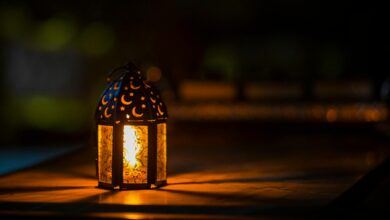How to Solve a Rubik’s Cube

How to solve the mechanical puzzle rubik’s cube invented by Hungarian sculptor and architect Ernõ Rubik in 1974. Let’s explain step by step.
What is a Rubik’s Cube?
Rubik’s cube, as the name suggests, was invented in 1974 by Hungarian sculptor and architect Ernõ Rubik. Although he produced the cube as a teaching tool to help his students understand three-dimensional objects, he later realized that restoring the changed spatial parts of the cube was a problem and applied for a patent on January 30, 1975.

How Did It Become Popular?
By 1977, their first designs were produced and released. Of course, there was a problem with this design because the cube Nichols designed was held together by magnets and the solution could be tricky. Later, a design was developed that prevented the design from separating easily, and the rubik’s cube took the form we know today.

Courtesy of Rubik, Tibor Laczi, a businessman, took him to a toy fair in Nuremberg, Germany, in February 1979. Discovered by Seven Towns founder Tom Kremer, the toy was launched in September 1979 by signing an agreement with Ideal Toys. ideal Toys wanted at least a recognizable name for the trademark; this arrangement brought Rubik to the fore and the name ‘Magic Cube’ was changed to ‘Rubik’s Cube’. By 1980, the Rubik’s Cube won the special game of the year award in Germany and similar awards for best toy in the UK, France and the USA. It has gained popularity around the world.

Now let’s come to the ‘how to solve’ part that will make you show off to your friends. As with everything else, this toy has a math, an algorithm. You will begin to understand this algorithm, which you will memorize in the first stages, as you solve it.
When you look at the earrings, you will see that the central colors are always fixed opposite each other. In the first stage, you have to choose a color for yourself, in this case, white color is preferred in general. We keep the center color of the selected white color so that it is on top. In the same way:
PART 1
We are trying to make the white color that we keep at the top a plus. I won’t give a combination here, try to do it the way you want. Try to do it so that the maneuvers are easier to grasp.

PART 2
In this part, we will bring the extensions of the white cross we have made, as in the image below, to align the upper part to the right and left. Here we will encounter three situations;
- First the colors will be the same on successive faces,
- second, the colors will be the same on opposite sides,
- Third, the colors will be the same on every face.
In this section, we will try to make the third case.

If the consecutive colors are the same, one of the exact colors should come to our right hand and the other should face forward (remember, white will always be on top).
In this case, the combination is:
- left side up
- top left
- left part down
- top right
- left side up
If the colors are opposite, you should keep one full color in the right hand and the other opposite it.
The combination for this case is as follows:
- left side up
- top left
- left part down
- top right
- left side up
In this case, we will get the first position by doing the combination and we will change our grip and repeat our combination.
Result: we have reached the third state and mapped the extensions of the white cross.
PART 3
Here we will make the corners of the white surface and the colors of the first upper part, as in the image. What we need to pay attention to here is the color harmony in the corners.

For example, you will adapt the colors by looking at the center colors.
If you bring the corners to the bottom, you will have no problem adjusting the color harmonies.

The adjusted and empty corner will always be in your right hand.
The combination for this case is as follows:
- right side down
- bottom left
- right side up
- bottom right
The combination will be repeated until white and colors fit into its corner.
Then we turn to the other side and repeat the above combination until the colors match.
PART 4
After completing the above part, we turn the cube upside down with the white surface down.
Here we are trying to make a triple column by rotating the top. same as in the image.

When you see the colors in the image, it is seen that the blue color is located on the right diagonal and the green color is located on the left diagonal.
If the location is as in picture 1:
- top left
- right side up
- top right
- right side down
Then turn the cube so that the only remaining piece is facing us:
- top right
- left side up
- top left
- left part down
If the location is as in the 2nd picture:
- top right
- left side up
- top left
- left part down
Then turn the cube so that the only remaining piece is facing us:
- top left
- right side up
- top right
- right side down
In this way, the color on the single color column shifts to the diagonal part of its own color.
In this process, always adjust the cube according to which color you want to cross on a triple column.
Sometimes a triple column of one color does not occur, in this case, think of the bottom of the color you want to bring as if it is a triple column and make the combination like that.
PART 5
Our cube now looks like this:

Now we will try to make a plus in the yellow part:

The combination for this is as follows:
- front right
- right side up
- top left
- right side down
- top left
- front left
A yellow column can be seen here, which may not form a plus after making this combination. In this case, do the combination again so that the yellow column is parallel to us and you will get a plus.
PART 6
Here we will now make the columns of the yellow cross one color as in the image:

Sometimes it can match, sometimes it doesn’t. If it does not come from, always two columns are formed as in the picture.
Here, take one column in your right hand and hold the cube with the other in front of you and do the following combination:
- right side up
- top left
- right side down
- top left
- right side up
- top left -left
- right side down
Complete the column colors by turning the upper part left and right.
PART 7
Now we need to make the corners of the yellow color. We should look at the harmony of the corners as in the picture:

Now, we looked at all the corners here, we found one compatible, or we found two or three compatible, let’s say that the compatible corner will be on our left hand, it will look at us. This is important, the right corner will be incompatible.
Now in the combination that will make all the corners harmonious:
- right side up
- top right
- left side up
- top left
- right side down
- top right
- left part down
The corners are now aligned here. now it remains to fulfill the yellow corners. To be in place, it should be in your hand with the yellow cornered part on the right.
After that the combination is like this:
- right side down
- bottom left
- right side up
- bottom left
Repeat this combination until the yellow square is placed at the top. Then bring the other yellow corner to the right side facing us again. Turn the bottom one turn to the right and repeat the following combination until the yellow snaps into place.
-right part down
-bottom left
-right part up
-bottom left
AND ABRACADABRA:







